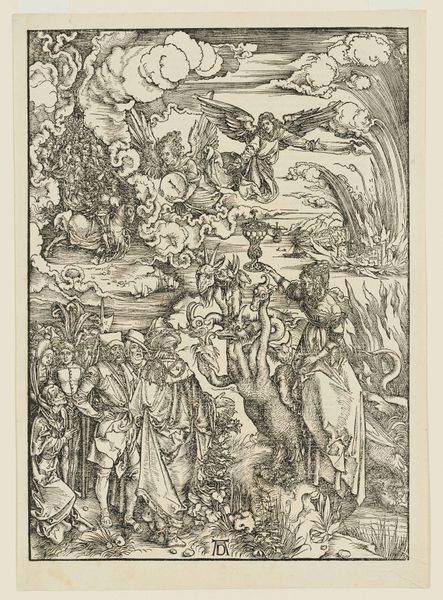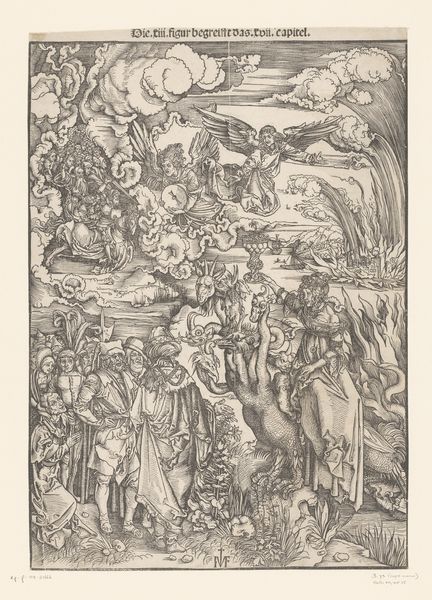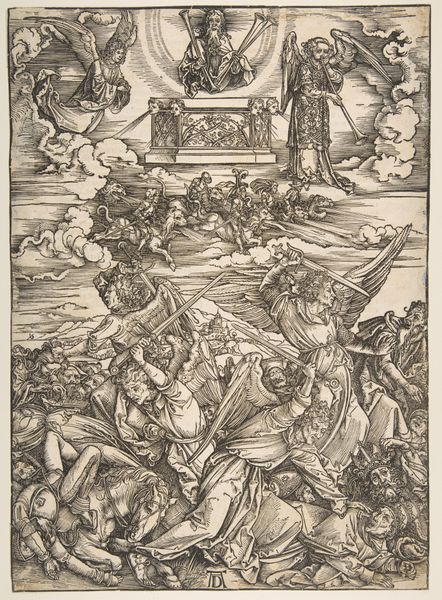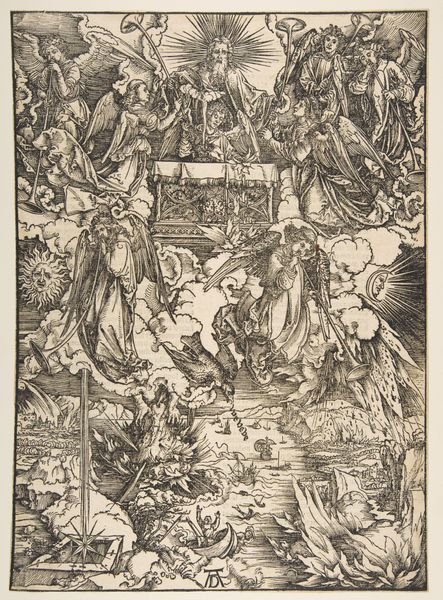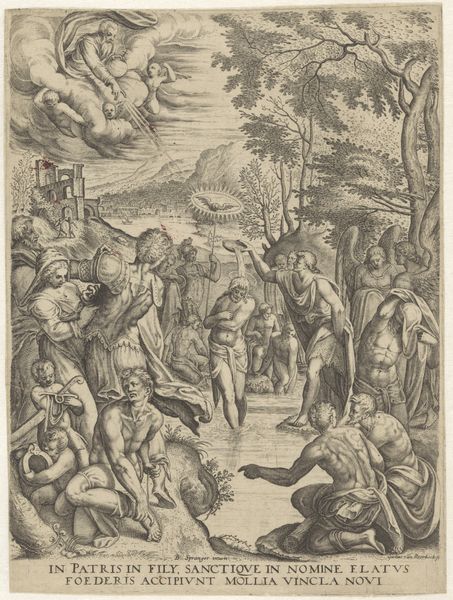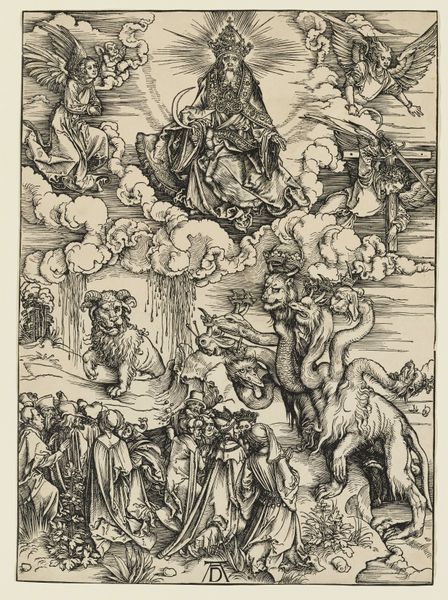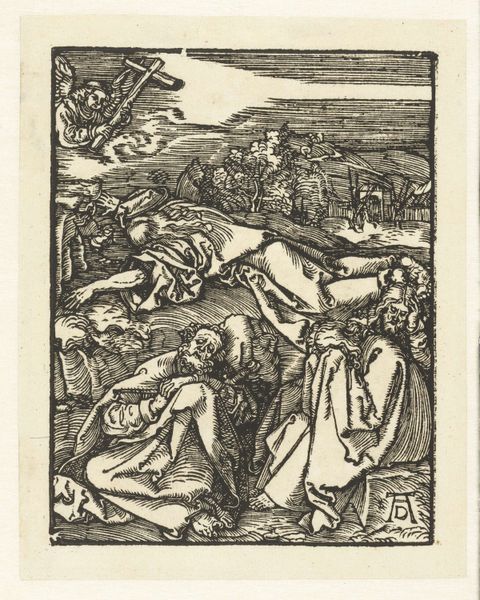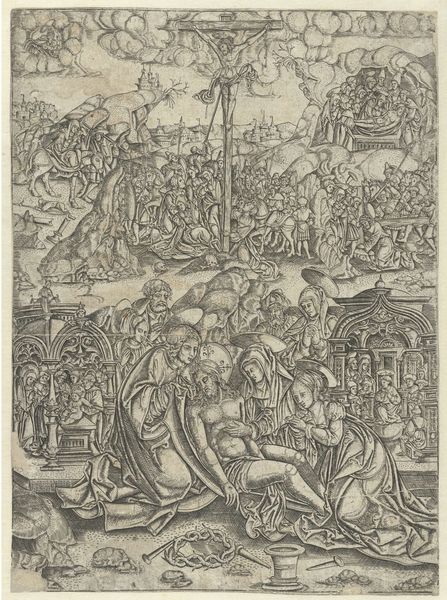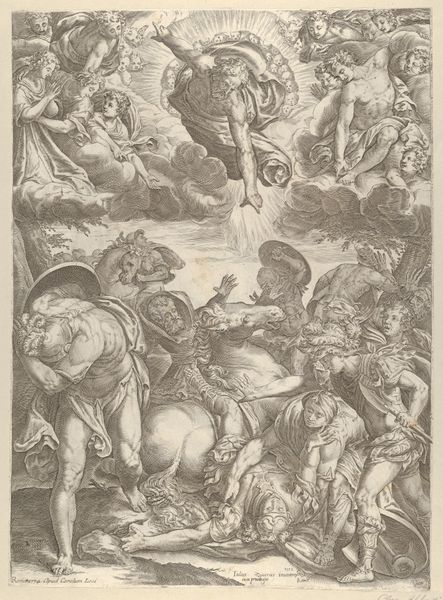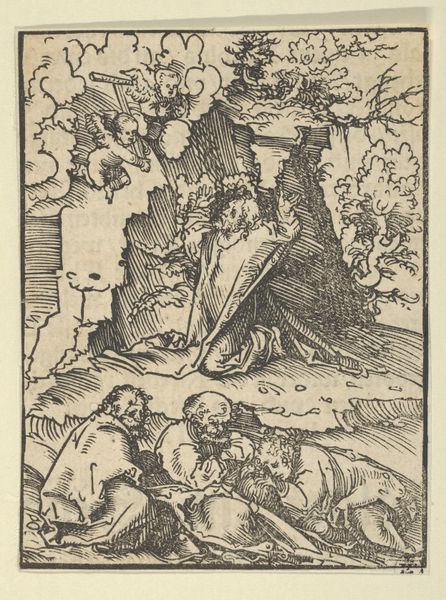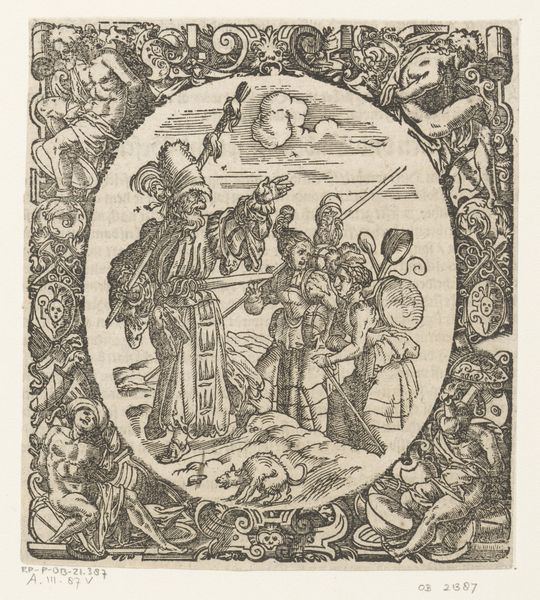
drawing, print, woodcut
#
drawing
#
ink drawing
#
narrative-art
#
pen drawing
# print
#
figuration
#
woodcut
#
history-painting
#
northern-renaissance
Copyright: Public Domain
Albrecht Durer created this woodcut, The Whore of Babylon, as part of his Apocalypse series, published in Nuremberg in 1498. These prints offered a terrifying vision of the end times that resonated with a society facing religious and political upheaval. Durer’s imagery draws heavily from the Book of Revelation, depicting the Whore as a symbol of corruption and decadence. Seated upon a seven-headed beast, she holds a cup filled with abominations, while kings and merchants gather at the left, seduced by her allure. Here Durer is drawing on a well-worn trope of the prostitute as the corrupter of honest men and merchants. This would have reinforced the sense of anxiety about the fragility of social order in the face of rising urban economies. Understanding Durer's work requires examining the history of religious movements and the rise of print culture in the late 15th century. Researching contemporary sermons, pamphlets, and other visual representations of the Apocalypse could shed light on the artist’s specific intentions. Ultimately, artworks such as this one provide invaluable insights into the social and institutional conditions of the time.
Comments
No comments
Be the first to comment and join the conversation on the ultimate creative platform.
